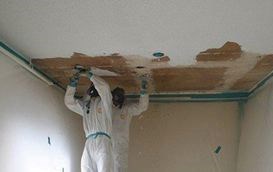WorkSafeBC is urging homeowners living in houses built before 1990 to test their homes for asbestos before starting any renovation projects.
The agency has launched an awareness campaign in answer to research that indicates homeowners may not be aware of just how prevalent the material can be and how dangerous it is.
Asbestos is the number-one killer of workers in British Columbia, according to WorkSafeBC. In the ten years from 2006 to 2015, 584 B.C. workers died from diseases related to asbestos exposure.
If workers breathe in enough asbestos, their lungs can be permanently damaged or they can get lung cancer. There is a long latency period (10 to 40 years on average) between the time a worker breathes in asbestos fibres and when a disease can develop.
In homes built before 1990 - townhouses and condominiums included - asbestos can potentially be found in more than 3,000 building materials such as linoleum, wall board and filling compound, textured ceilings, vermiculite insulation, pipe insulation, in furnaces or wiring.
Asbestos can be released into the air when these building materials are drilled, sawed, sanded or broken up during a renovation or demolition. In such cases, workers can breathe in asbestos fibres if they are not protected.
"Asbestos kills," said Al Johnson, WorkSafeBC's vice president of Prevention Field Services. "The relatively low level of awareness by home owners regarding the dangers posed by asbestos means workers and even family members can potentially be put at risk.
"Renovations and demolitions of older properties continue at a very high rate and homeowners need to be informed about the dangerous nature of asbestos and how to protect workers and themselves."
The best way to identify asbestos in a home is with the help of a qualified testing company or asbestos surveyor. Once that's done, the next step is to have the identified asbestos removed by a qualified asbestos abatement contractor.
More information can be found at ThinkAsbestos.com and HiddenKiller.ca, as well as at WorkSafeBC.com.



